- Bernard Preston homepage
- Our green kitchen
- Enrich Your Grits With Greens and Other Vegetables
Enrich your grits with greens and other vegetables
Enrich your grits with greens and other vegetables to lower the Glycemic Index; you will also add extra nutrients, vitamins and many minerals.
There's a long tradition going back into the mists of time of adding greens to a starch to enrich it. For example, in Holland the cooks would mix finely chopped cabbage into mashed potato to make "stamppot." Another is the "blatsara" made from cornmeal in Epirus, the northwest of Greece.
In the Transkei province of South Africa "umfino" is the common grits to which dark-green leafy vegetables such as spinach, cabbage and often an onion have been added.
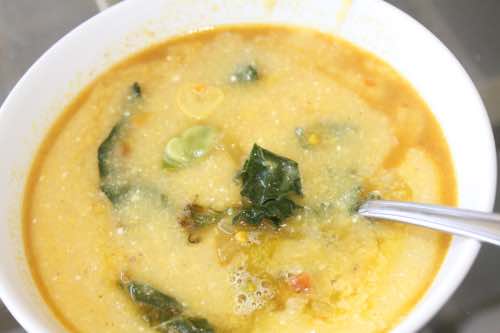 Grits enriched with greens, onions and broad beans
Grits enriched with greens, onions and broad beansThese greens add more fibre, minerals and important phytonutrients like lutein to the meal. They would slow gastric emptying reducing the glycaemic index and making the dish available to diabetics.
Most of those eating typical grocery store food get less than 50% of the required magnesium from their food, for example; heart disease soars.
And macular degeneration from a lutein deficiency is tragic.
 Basic 100% wholemeal corn grits
Basic 100% wholemeal corn gritsWhilst this is true of the basic wholemeal corn grits that the Xhosa people have eaten for hundreds of years it is even more important today; the "real deal" is no longer commonly available and few women still grind their maize themselves.
All they can get is "super maizemeal" from which all the goodness, flavour and fibre have been extracted by unscrupulous millers. So they have become accustomed to large amounts of sugar and too much salt.
Umfino
The word umfino actually means greens; but we will use it in a more general sense. One can add the vegetables of your choice. The Xhosa people typically use spinach, onions and new potatoes all recently harvested from their gardens.
New potatoes have a low GI[2].
Today we add a little tomato, red peppadew and green onion tops too; tailor it to your needs and liking.
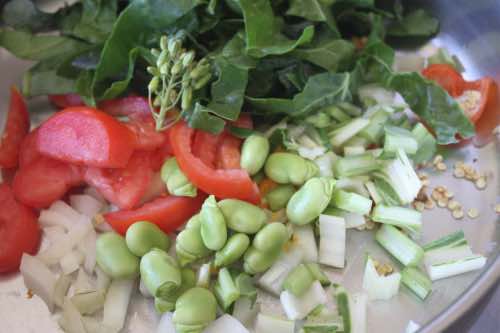
Ingredients
- 100% whole grain grits
- Quarter of an onion
- Various greens
- Other optional vegetables
Go for it
- Cook the grits in the usual way.
- Fry a finely chopped onion in butter.
- Add the other ingredients and a little water; simmer for a few minutes.
Personalise your umfino
We all have particular needs. Perhaps you have threatening macular degeneration; add in a few leaves of kale, the richest source of lutein.
I personally have a tremor in my right hand which is well controlled by the L-dopa in fava beans; you can see them lurking in the photos above.
Diabetes
Diabetics have to beware of all carbs, even the good ones. That is especially true of the ultra-refined grits generally eaten around the world; known as super maizemeal in South Africa.
All the fibre and fat have been removed, gastric empty is rapid as is the surge in blood glucose. Obesity and type 2 diabetes soon follow in those eating large amounts daily.
Dr Campbell's ten year diabetes rule is invoked; large amounts of sugar added to tasteless ultra-refined grits.
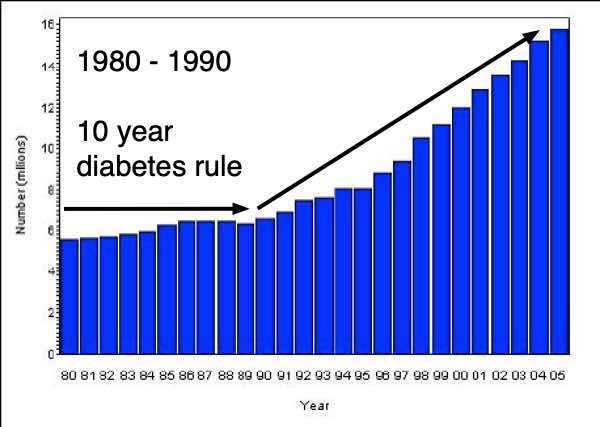
Flavour
100% wholegrain maizemeal has a wonderful, rich aroma; but once those phytonutrients have been extracted by the millers it becomes utterly boring. Either add large amounts of sugar or enrich your grits with greens and other vegetables to make it palatable.
"Commercial pap tastes bland; like everything mass-produced it is devoid of any care or soul. Whereas made at home, especially when enriched with greens and other vegetables it has so much more flavour."
- Chef Ray Mahlaka
Vegetable extract
Simply cooking grits in stock made from scraps is another way to enrich your grits with greens and other vegetables. Use your own creativity; I never get locked in by a recipe.
Fruit
Add fruit either raw or cooked occasionally; it is another way to enrich your grits instead of greens and other vegetables.
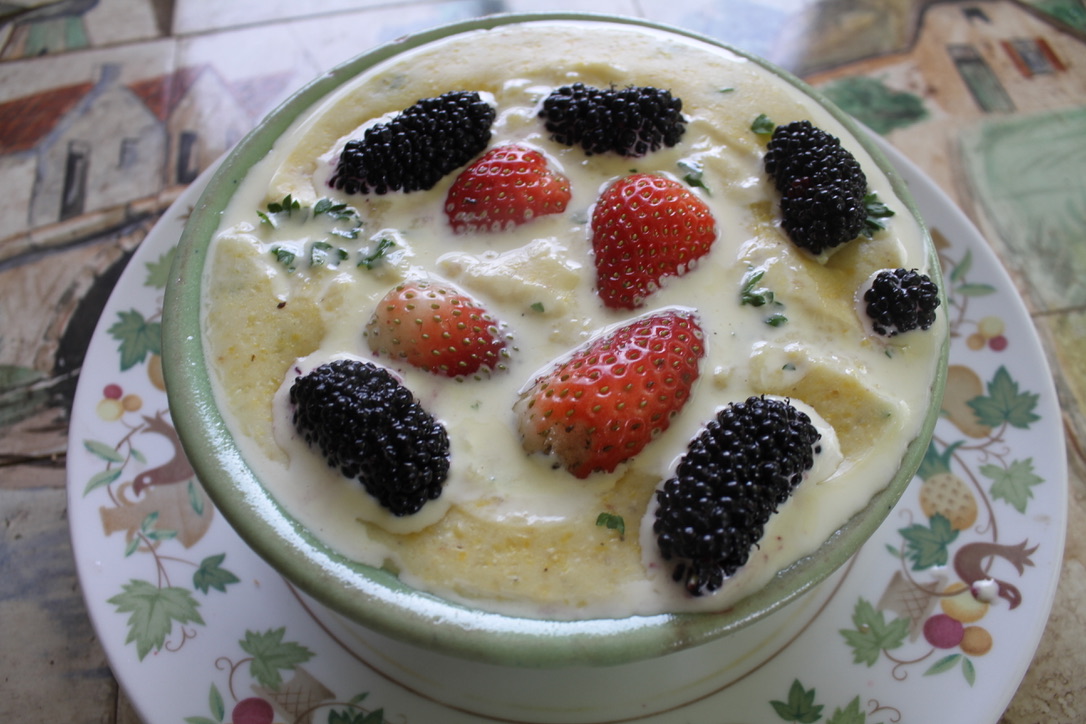 Stoneground cheesey grits
Stoneground cheesey gritsLignans
Lignans are phytonutrients found in the bran of seeds and other vegetables. Wholemeal corn grits is a particularly rich source of these very important compounds; once they enter the colon they are devoured by the normal flora forming substances with a similar structure to human oestrogen.
They compete with oestrogen at sites on the breast. Just one helping of a whole grain each day reduces the incidence of malignant tumours by nearly 50%[1]; that's massive.
Enrich; and allow to retrograde
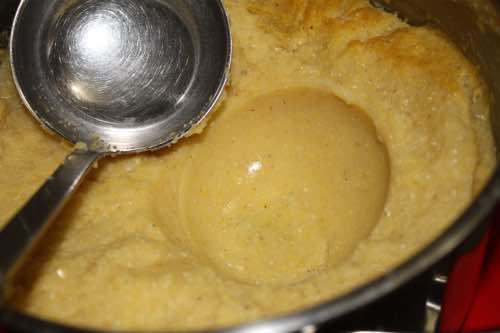 Cool overnight; retrogradation slows the digestion of the starch.
Cool overnight; retrogradation slows the digestion of the starch.Perhaps the simplest way to reduce the GI of starches so that even those who are wary of carbs because of their calories can enjoy them, is to allow them to cool overnight. The molecules set in a crystalline form slowing gastric emptying and the work of the digestive enzymes; it's called retrogradation.
The grits forms into a thick, stodgy mass. Simply add boiling water, stir and heat briefly on the stove; the GI remains low.
Yellow or white?
The chief difference is that yellow maize gets its colour from a very important nutrient called beta-carotene; it is the precursor of vitamin A.
It is estimated that half a million children go blind every year because of a vitamin A deficiency; if they simply ate yellow grits instead of white they would have near complete protection.
It's no coincidence that farmers feed their cattle, pigs and chickens on yellow corn.
Two-thirds of a cup of cornmeal (100g) would give a small child almost complete protection; 214 IU of the RDA of 300.
Marketing
There are some disgraceful things about marketing. Once something is considered a "health food" the price goes up radically and it rarely goes on a special promotion.
Have you noticed that peanut butter with no sugar or emulsifiers can cost double the price of the ultra-processed product?
100% wholegrain cornmeal or wheat flour are difficult to find and will usually cost substantially more than their ultra-refined cousins; despite being far less work to produce.
The Zulu and Xhosa people in South Africa eat vast amounts of ultra-refined maizemeal daily for energy; the women in particular have become amongst the most obese in the world. Their wealthier counterparts enjoy cornflakes. In many communities over 30% of adults are fully diabetic.
"My family of three adults eats 25kg of super white maizemeal per month; 250 grams per person each day. The cost in 2024 is R270."
- Victor Mbanjwa
The farmer is paid R4.20/kg in South Africa for his maize. Degrading it utterly, food companies will charge around seventy rand for cornflakes. They can sell the best parts for pig food and then demand over ten rand for the hollowed-out calories in super meal; seventeen if you purchase just one kilo.
See what the price of 100% wholegrain corn costs in your grocery store; if you can find it at all. We have purchased a mill.
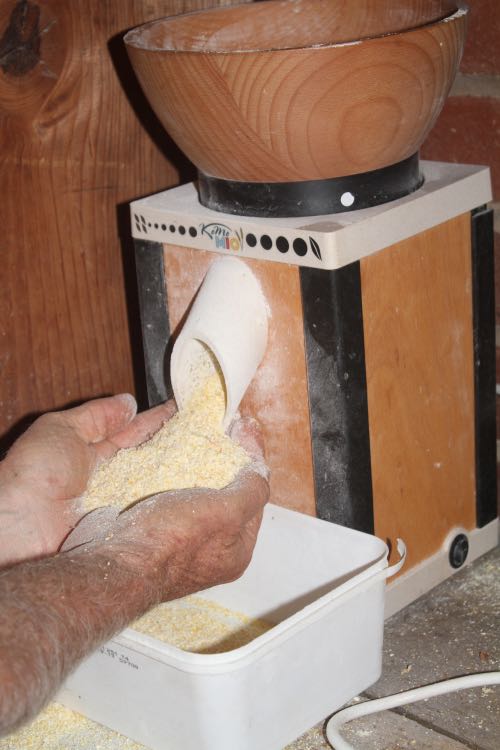
Enrich your grits with greens and other vegetables
Enrich your grits with greens and other vegetables for more flavour; allow it to cool overnight if you are concerned about your weight.
Cook enough for three or four days; retrograde the leftovers in the fridge.
When browsing use right click and "Open Link in New Tab" or you may get a bad gateway signal.
Newsletter
Our newsletter is entitled "create a cyan zone" at your home, preserving both yourself and Mother Earth for future generations; and the family too, of course. We promise not to spam you with daily emails promoting various products. You may get an occasional nudge to buy one of my books.
Here are the back issues.
- Lifestyle and ideal body weight
- What are ultra-processed foods?
- Investing in long-term health
- Diseases from plastic exposure
- Intensive lifestyle management for obesity has limited value
- A world largely devoid of Parkinson's Disease
- The impact of friendly bacteria in the tum on the prevention of cancer
- There's a hole in the bucket
- Everyone is talking about weight loss drugs
- Pull the sweet tooth
- If you suffer from heartburn plant a susu
- Refined maize meal and stunting
- Should agriculture and industry get priority for water and electricity?
- Nature is calling
- Mill your own flour
- Bake your own sourdough bread
- Microplastics from our water
- Alternative types of water storage
- Wear your clothes out
- Comfort foods
- Create a bee-friendly environment
- Go to bed slightly hungry
- Keep bees
- Blue zone folk are religious
- Reduce plastic waste
- Family is important
- What can go in compost?
- Grow broad beans for longevity
- Harvest and store sunshine
- Blue zone exercise
- Harvest and store your rainwater
- Create a cyan zone at your home
Did you find this page interesting? How about forwarding it to a friendly book or food junkie? Better still, a social media tick would help.
- Bernard Preston homepage
- Our green kitchen
- Enrich Your Grits With Greens and Other Vegetables
Address:
56 Groenekloof Rd,
Hilton, KZN
South Africa
Website:
https://www.bernard-preston.com